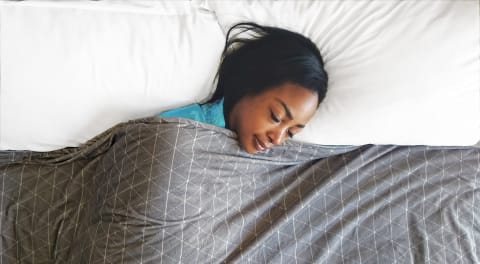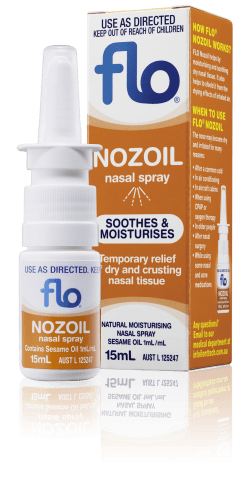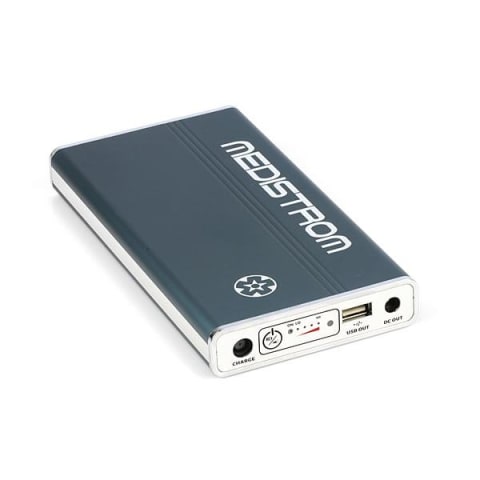CPAP Machine on Flights
Flying with CPAP: A Complete Travel Guide for a Restful Journey
For many Australians living with sleep apnea, CPAP therapy is a nightly lifeline, essential for breathing properly, feeling rested, and protecting long-term health. But what happens when your routine takes to the skies?
Whether you’re flying for business, visiting family interstate or finally heading off on that overseas holiday, one thing’s for certain: good sleep doesn’t need to stay grounded. With the right setup, planning, and support, you can maintain your CPAP therapy — and your comfort — at 30,000 feet.
Using Your Travel CPAP Machine During a Flight
The first and most important thing to know is this: yes, you absolutely can use your CPAP machine on most commercial flights. In fact, continuing therapy while flying (especially overnight or across time zones) is not only allowed but strongly encouraged by sleep and respiratory specialists.
Many modern CPAP devices, especially travel models like the ResMed AirMini , are designed specifically with air travel in mind. They’re compact, lightweight, and approved by aviation authorities such as the FAA (Federal Aviation Administration) for in-flight use.
That said, you’ll still need to do some legwork. Not all airline seats come with compatible power outlets, and even fewer offer spare batteries on board. The key to successful in-flight CPAP therapy is planning ahead — and that begins with understanding what your airline will allow, and what you’ll need to bring.
Using CPAP therapy during a flight can prevent issues like morning headaches, increased drowsiness, and dry throat — common after a skipped night of therapy. For those with moderate to severe OSA, flying without treatment can lead to real discomfort and disrupt your energy levels for days.
Plan Ahead to Ensure Your CPAP Machine Meets Airline Requirements
Airline policies can vary, but all will require that your CPAP device meet basic safety standards. In Australia, devices approved by the TGA are generally fine for domestic carriers, but international flights follow broader regulations — particularly around lithium batteries and onboard usage.
Here’s what to do before you fly:
- Check your device’s certification. Look for a label or user manual stating that the device is “FAA compliant” or “meets in-flight use requirements.”
- Download your compliance letter. Most manufacturers provide downloadable letters certifying the device’s suitability for in-flight use. It’s a smart idea to print one or save a copy on your phone.
- Notify your airline. Many require at least 48 hours’ notice if you plan to use a CPAP machine onboard. This allows them to confirm seat selection (often a window seat) and discuss power needs.
- Ask about in-seat power availability. Some aircraft — especially on long-haul international routes — have AC or DC power outlets, but you’ll need to confirm the wattage and connector type.
- Confirm seating requirements. Airlines may ask CPAP users to sit by the window to avoid tubing interference with neighbouring passengers. Knowing your seat assignment in advance helps ensure comfort.
For peace of mind, you might also request a medical travel letter from your GP or sleep specialist confirming your diagnosis and CPAP use. This can help during security screening or customs, particularly overseas.
Carry Your CPAP Machine in Its Protective Travel Case Onboard
CPAP machines are considered essential medical equipment, which means they do not count toward your standard carry-on baggage allowance. However, they must travel with you in the cabin — never in checked luggage.
Here’s how to pack smart:
- Use a sturdy travel case. Most CPAP devices come with a branded travel bag. If yours doesn’t, Sove CPAP Clinic offers compact, padded cases ideal for air travel.
- Empty and dry your humidifier. Residual water in a humidifier chamber can leak or damage the machine. If you’re flying, especially with altitude changes, it’s safest to travel with an empty chamber.
- Keep accessories together. Mask, tubing, filters — pack all components in the same bag. You’ll want to keep setup as simple as possible, especially if you plan to use your device mid-flight.
- Label your machine. Add a tag or sticker indicating “MEDICAL DEVICE” along with your name and contact information. It helps avoid confusion at security or when stowing overhead.
If you’re taking a secondary battery or charger, be sure it’s stowed with you and easily accessible. Most airlines prohibit lithium batteries from being checked in due to fire risk, and you’ll need to present the battery for screening.
Pack These Travel-Friendly Accessories to Support CPAP Use on Flights
Using CPAP therapy away from home comes with different needs. Whether you plan to use your device during the flight or just want a seamless transition upon landing, the right accessories can make all the difference.
Consider adding these items to your packing list:
- Waterless humidification – ResMed’s HumidX cartridges work without water, capturing moisture from your breath and delivering it back as humidified air. Ideal for dry cabin air.
- Travel wipes and hose cleaning tools – Keep your mask and tubing fresh, especially if you’ll be away from your usual cleaning setup.
- Plug adapters and extension cords – If you’re travelling internationally, bring the right plug for your destination. Many travel CPAPs are dual voltage but still require the correct socket.
- Backup filters and mask cushions – Dry cabin air, hotel HVAC systems, or unfamiliar climates can make your equipment wear out faster. Having spares ensures uninterrupted therapy.
Sove CPAP Clinic Offers Trusted Solutions for Travel and Beyond
Flying with CPAP doesn’t need to be stressful. At Sove CPAP Clinic, our mission is to make sleep therapy more accessible and more manageable — wherever you are in the world.
We offer:
- Expert travel advice and personalised consultations
- Telehealth fittings and remote setup support
- CPAP rental programs for short-term trips
- Compact, TGA-approved travel machines from ResMed, Philips, and Fisher & Paykel
- Ongoing clinical support
If you’re unsure whether to invest in a second CPAP machine for travel, our team can help you explore the benefits. Some patients find that switching to a smaller device like the AirMini makes their therapy more convenient every day — not just while flying.
ALWAYS FOLLOW THE DIRECTIONS FOR USE. CPAP is used for Obstructive Sleep Apnoea treatment. When considering whether CPAP is right for you, speak to your doctor.
CPAP & Flying: Frequently Asked Questions
Is sleep apnoea worse on a plane?
Not necessarily, but cabin conditions can make symptoms more noticeable. The air on a plane is thinner and drier than at sea level, which may increase the likelihood of dry mouth, nasal congestion, or headaches — especially if you skip therapy. CPAP use helps maintain normal oxygen levels and keeps airways open even in less-than-ideal conditions.
For those with moderate to severe OSA, the combination of poor posture (like sleeping upright), noise, and dry cabin air can make sleep more fragmented and less restorative.
How do I power my CPAP on a plane?
Some international flights offer AC power ports in select seats, but not all aircraft or seat classes provide sufficient wattage. A safer solution is to bring a CPAP-compatible battery. These are designed to meet airline regulations and typically provide a full night of therapy. Remember to store the battery in your carry-on and confirm airline policies about lithium batteries beforehand.
Battery duration varies depending on pressure settings, humidifier use, and machine model. For example, using a humidifier can significantly reduce run time. If you travel frequently, consider investing in a dedicated CPAP battery with a tested runtime and recharge time. It’s also useful to fully charge your battery before you leave and bring a charging cable compatible with both your machine and destination plug types. Sove offers airline-compliant batteries and can guide you on which one suits your setup.
Does altitude require adjustment of my CPAP machine?
Most modern devices include automatic altitude adjustment — meaning they self-calibrate when flying or sleeping at high elevation. This is particularly useful if you travel often to mountain areas or are flying long-haul. If your device doesn’t include this feature, consult with your clinician or a Sove consultant before your trip.
Changes in altitude affect air pressure, and without proper adjustment, your CPAP therapy may become less effective. Auto-adjusting (APAP) machines are particularly helpful for travellers, as they adapt not only to altitude but also to fluctuating airway resistance during the night. If you’re unsure whether your machine has this capability, check the user manual or speak to our team. They can recommend whether a temporary setting change is needed for travel.
What is considered a high CPAP machine pressure?
Typical therapeutic pressures range between 4 and 20 cm H₂O. Anything above 15 is considered high. If you’re using higher pressures and find breathing uncomfortable, ask your provider about pressure relief features or whether a BiPAP might suit you better. High pressures can feel more intense in dry, pressurised cabins.
Some machines offer Expiratory Pressure Relief (EPR) or similar features that reduce the pressure when you exhale. This can be particularly helpful in-flight when cabin conditions make therapy feel more noticeable. If you’re a frequent flyer using high pressure, your Sove consultant can help explore whether switching to a BiPAP machine or using travel-specific pressure settings could enhance comfort and adherence.
Should I check my CPAP machine when flying?
No. Your CPAP should always be carried on board. It won’t count against your baggage allowance, and it’s less likely to be damaged or delayed if it stays with you. Checked luggage can experience rough handling and environmental changes that may affect your device’s function.
CPAP machines are sensitive electronic devices with parts that can shift or break under pressure. Additionally, if your luggage is lost or delayed, you risk going without therapy until it’s returned. Always pack your CPAP in its protective case, along with your mask, tubing, charger, and a small note explaining it is medical equipment.













